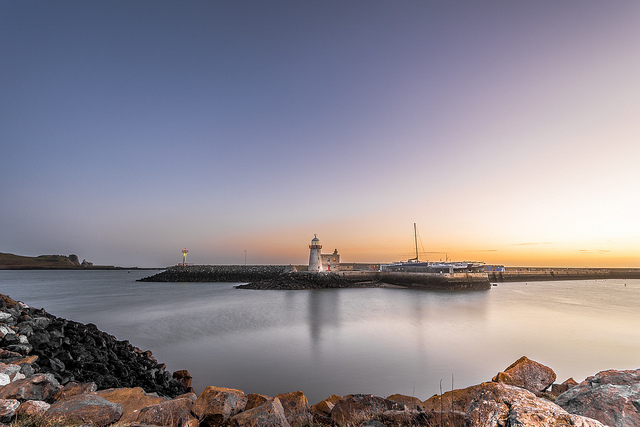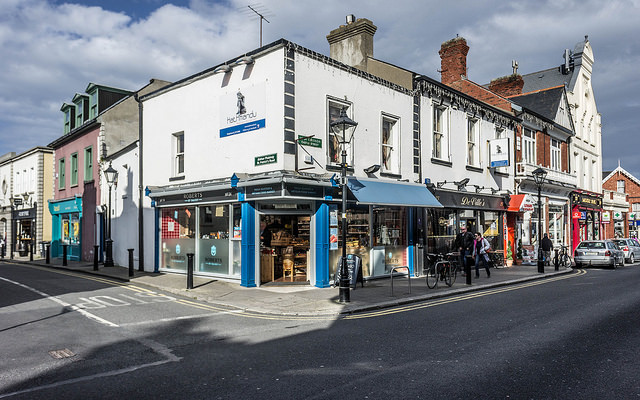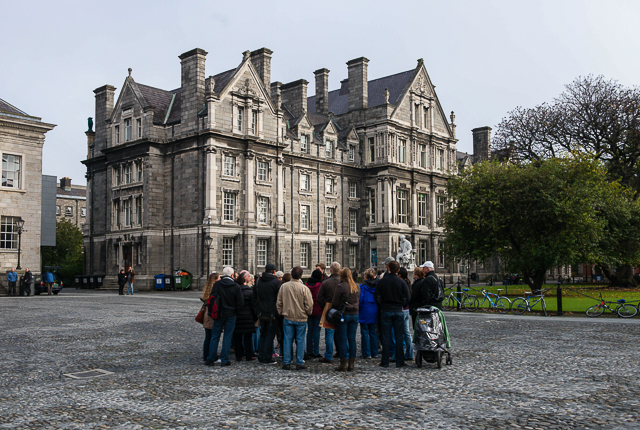
Dublin/Oyster
Once you're covered Dublin's major landmarks and tourist sights, it's time to escape the city and explore Ireland's beautiful rural landscapes and many historical and cultural attractions. There's certainly plenty to explore: quaint seaside towns, imposing castles, and majestic country estates set in landscaped gardens, not to mention historic buildings made of weathered stone, atmospheric graveyards full of Irish high crosses, and plenty of walking trails through landscapes of lush forests and rolling hills. Many of these are just a short drive from the capital or easily accessible by bus or via the efficient train network. Looking to escape the city for the day? Here are 10 of the best day trips to take from Dublin.
1. Glendalough
Glendalough; Joe King/Wikimedia.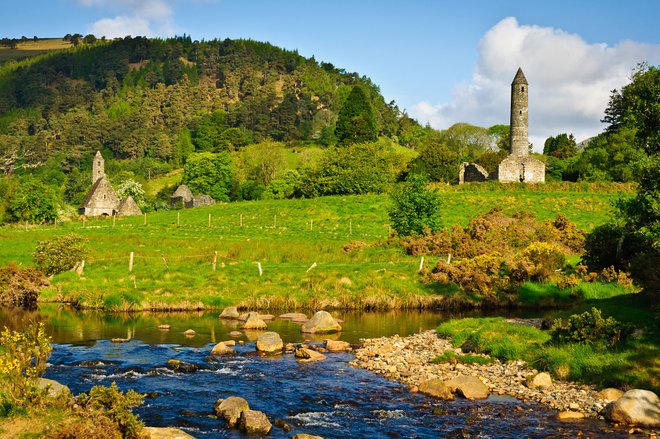
Mystical Glendalough is just 15 miles south of Dublin in County Wicklow, but a world away from the bustle of the capital city. Meaning “valley of two lakes”, this is the site of a sixth-century monastic settlement. The monastery was made up of a large complex of workshops for manuscript writing and copying, a residential area, on-site farm, guesthouses for visitors, and a hospital. The ruins that are left today date back to the period from the 10th to the 12th centuries, and some of these are quite extraordinary. Entirely made of stone, the 98-foot-tall round tower is topped with a conical roof, and the stone gateway of double arches is unique in Ireland. The well-preserved St. Kevin’s Church is also made entirely of stone and has stood the test of time. Set in a lush green valley, this is also a hiker’s paradise: There’s a one-mile trail leading to the Upper Lake and St. Kevin’s Bed — a cave overlooking the lake where the saint once lived.
2. Powerscourt Estate
Powerscourt Estate; Amanda Susan Monroe/Wikimedia.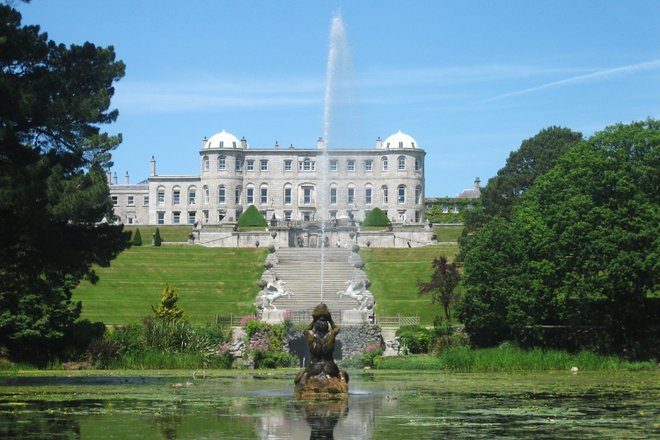
Eleven miles south of Dublin in Enniskerry in the county of Wicklow is the majestic and picture-perfect Powerscourt Estate, surrounded by landscaped gardens and framed by an impressive backdrop of mountains. This large country estate looks like a chateau straight out of France’s Loire Valley. Not surprisingly, this was once a 13th-century castle that was later reconstructed in the 18th century. Originally the seat of the noble Powerscourt family, it was later owned by the Slazenger family of the eponymous sporting goods company. Walking trails crisscross the property’s vast grounds, which features a golf club, a man-made lake, and a five-star hotel and restaurant.
3. Powerscourt Waterfall
Powerscourt Waterfall; Gfox228/Wikimedia.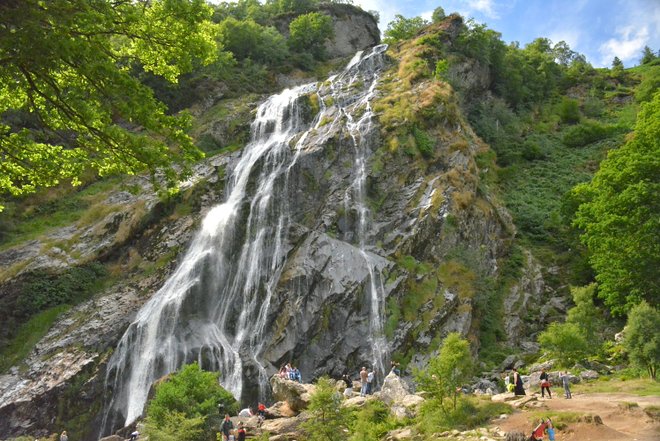
At the foothills of the Wicklow Mountains along the Dargle River — just a 45-minute drive from Dublin — is Ireland’s highest waterfall. The 398-foot-high Powerscourt Waterfall cascades down a rocky hillside surrounded by forests of oak, pines, beech, larch and over 200-foot-high giant redwoods native to California. Open year-round, this is popular picnic spot and weekend getaway for families, and there’s a nature trail to entice hikers and bird watchers.
4. Brú na Bóinne
Bru na Boinne; Jean Housen/Wikimedia.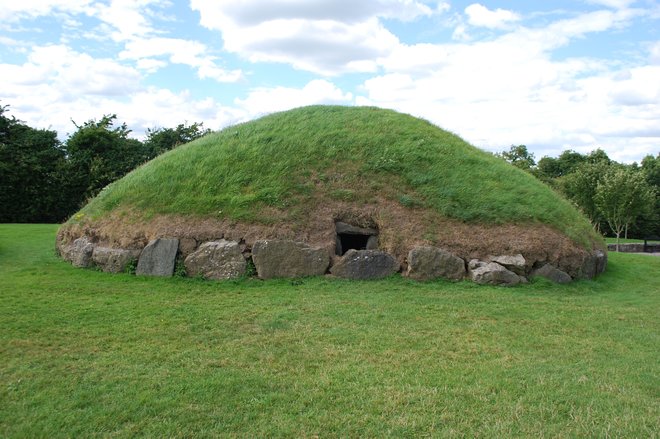
This is a fascinating prehistoric settlement that was first inhabited 6,000 years ago and today is recognized by UNESCO as a World Heritage Site. Situated 33 miles northwest of Dublin, in the valley of the river Boyne in County Meath, Brú na Bóinne is an easy one-hour drive or two-hour bus journey. Some of the monuments here date back to the Neolithic period and even predate the Egyptian pyramids. The 1,927-acre complex is made up of dozens of passage graves (covered burial chambers), and the largest are located on the north side of the river and accessed via a footbridge. These consist of three huge grass-covered mounds that were used as tombs. The tomb of Newgrange is the oldest, dating back to 3200 B.C. It’s supported by circular drystone walls and made of over 220,000 tonnes of earth and rock. It’s entered via a narrow 62-foot-long passageway flanked by carved stones covered in spiral designs. During the winter solstice, the passage is lit by the light of the rising sun. Guided tours of the site can be booked at the Visitors Center on the south side of the river Boyne.
5. Howth
It’s just a 20-minute train ride from the center of Dublin to Howth, a seaside village perched on a rocky peninsula jutting out into the Irish Sea. Just steps from the train station is Howth Market, where stalls arranged in even rows peddle artisanal food products, traditional Irish crafts, antiques, and jewelry. The picturesque fishing harbor is lined with seafood restaurants along the West Pier — it’s a good place to grab lunch before exploring nearby Howth Castle and its flower garden. Walking trails take hikers to neighboring beaches or up towards the rocky cliffs overlooking the village and the sea. Another popular attraction is Ireland’s Eye, a tiny island that can be easily reached by boat. It’s the site of a nature reserve and sixth-century monastery.
6. The Rock of Cashel
Cormac’s Chapel and Cashel Cathedral; Rx-Guru/Wikimedia.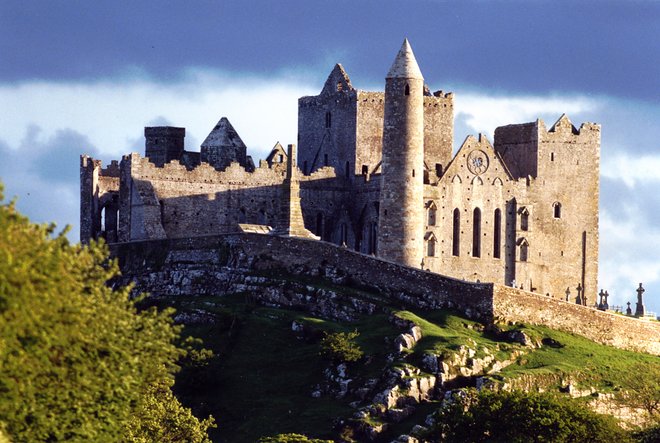
The Rock of Cashel (also known as St. Patrick’s Rock or Carraig Phádraig in Irish) is a collection of fascinating historical buildings constructed of gray stone and contained within a walled complex. Perched on a mountaintop, the complex features several impressive examples of Celtic art and medieval architecture, and most of the buildings here were constructed sometime in the 12th or 13th centuries. The oldest building is the 90-foot-high round tower originally built using the dry stone method, but the stones were later filled in with mortar to strengthen the structure.
Another highlight is the 13th-century Cormac’s Chapel and its characteristic vaulted ceilings and arched windows. But its most noteworthy feature is the 800-year-old frescoes adorning the walls and ceilings, which are the best preserved in Ireland. Attached to the chapel is a 13th-century cathedral that resembles a massive castle and is dominated by a central tower. In the graveyard are several examples of iconic Irish high crosses.
The Rock of Cashel is located in County Tipperary and is a little farther away from Dublin: Getting here will will take an hour and 45 minutes by car or just over two hours by bus, but this is still a doable day trip from Dublin.
7. Dalkey
Eleven miles southeast of Dublin on the Irish Sea is charming Dalkey. This is one of the 15 designated heritage towns of Ireland, and it has a village-like feel. Today this is the most sought-after Dublin suburb, home to celebrities like Bono, Enya, and Van Morrison. Castle Street can’t be missed: This is the site of important landmarks like the 10th-century church of St. Begnet and the 14th-century Dalkey Castle, which has been transformed into a heritage center. Dalkey’s tiny harbor overlooks desolate Dalkey Island, which today is inhabited only by goats that wander through the seventh-century ruins of a church. Whiterock Beach is a popular nearby swimming spot. Dalkey can be reached via DART, Dublin’s suburban railway line, and is a 35-minute ride away from the city center.
8. Castletown House
Castletown House; RafalZabron/Wikimedia.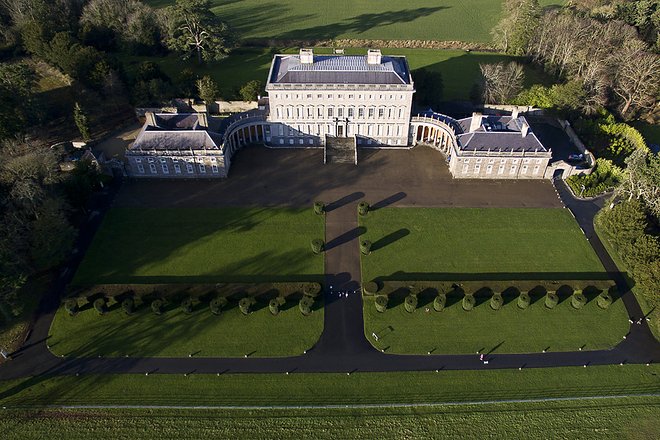
Built for a former politician in 1722, Castletown House is a grandiose mansion set in the countryside of County Kildare, about 14 miles west of the center of Dublin. The house is an excellent example of the Palladian style of architecture, which was popular in Europe in the 17th and 18th centuries. The property itself can be visited from mid-March to early November, when visitors can join a 45-minute tour of its opulent interiors and art collection. But the grounds which are largely made up of parklands are open all year round and are a popular escape for family picnics or walks through the gardens and along the river Liffey.
9. Dun Laoghaire
Dun Laoghaire harbor; JohnCoxon/Wikimedia.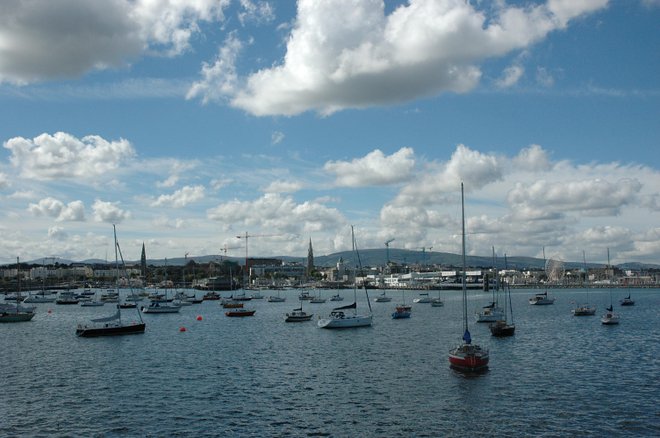
Another easy day trip, Dun Laoghaire is only nine miles southeast of Dublin and easily accessible via a 20-minute ride on the DART suburban train. This is a charming town located on the picturesque Dublin Bay, where people go for a change of scene and to escape the heady pace of city life. The mile-long East Pier Walk takes walkers past the harbor, where yachts can sometimes be seen docked next to fishing boats. The National Maritime Museum of Ireland is located here and set in a renovated church, while the People’s Park is popular for its flower gardens and Victorian-style tea rooms. For panoramic views over Dublin Bay, climb the James Joyce Tower, named after the author because it inspired the opening scene of his novel “Ulysses.” It’s now a museum dedicated to him and an important place of pilgrimage for his fans.
10. Trim
Trim Castle; Andrew Parnell/Wikimedia.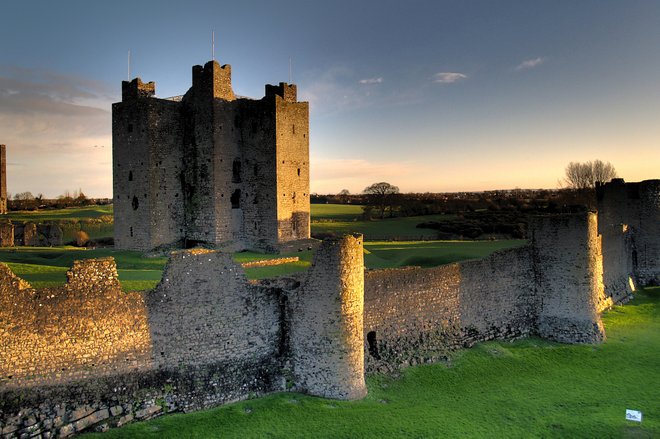
Trim is a heritage town of colorful façades located on the river Boyne in County Meath, 28 miles northwest of Dublin. The most popular attraction here is the massive 12th-century Trim Castle which dominates the town. This is one of Ireland’s best preserved castles and the largest Norman castle in Europe, but it’s best known as one of the dramatic sets used in the movie “Braveheart.” Visitors can join one of the castle tours, but a climb up its three stories via seemingly endless stairs with only ropes as handrails is not for the faint-hearted. But once you get to the rooftop, the views from here are well worth the effort.
Need a place to stay in Dublin? Check out our reviews of 129 hotels in Dublin.
You’ll Also Like:
- The Best Time of the Year to Visit Ireland
- Ireland Travel: 10 Attractions You Don’t Want to Miss
- 10 Enchanting Castle Hotels in Ireland
All products are independently selected by our writers and editors. If you buy something through our links, Oyster may earn an affiliate commission.
